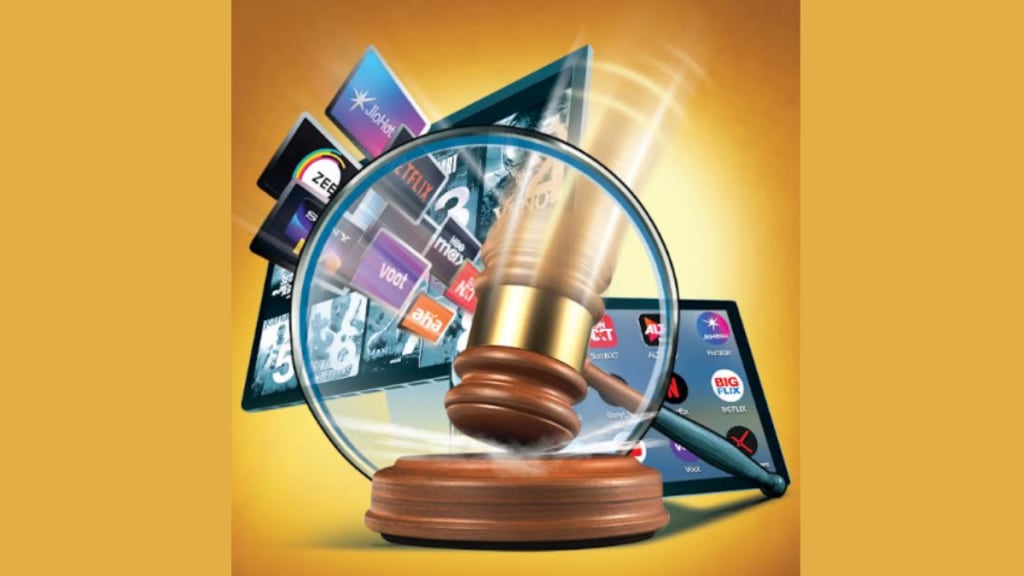‘Balance between freedom & accountability is a must ’
Sandeep Goyal
Chairman, Rediffusion; Former Group CEO, Zee
The debate on regulating OTT platforms centres on striking a balance between promoting free speech and ensuring responsible content dissemination. Concerns exist regarding the potential for overreach and censorship, as well as the need for clear, consistent guidelines for content regulation. The government has issued advisories and guidelines, mandating compliance with Indian laws and promoting self-regulation by OTT platforms. But there is a serious gap between the law, and actual reality.
Serious concerns exist about the potential for harmful content, including obscene or pornographic material, to reach children and vulnerable audiences. OTT platforms are expected to adhere to existing laws like the Indecent Representation of Women (Prohibition) Act, 1986, and the Information Technology Act, 2000. The government has also urged OTT platforms to implement age-based classification and adhere to the Digital Media Ethics Code. Recent controversies and debates on digital content, such as the YouTube controversy, have fuelled calls for stricter regulations. The nay-sayers’ argument simply is that OTT regulation must help promote Indian content and ensure that platforms respect the cultural sensitivities of the country.
Concurrently, there is also the fear that regulations could lead to excessive government control, stifling creative freedom and artistic expression. The absence of clear and specific guidelines can create ambiguity and uncertainty for content creators, potentially leading to self-censorship or legal challenges. Concerns exist that overly burdensome regulations disproportionately affect smaller, independent content creators. Overly strict regulations could also violate the constitutional right to freedom of speech and expression.
There is no dearth of laws, codes or guidelines. The Intermediary Guidelines and Digital Media Ethics Code, 2021 mandates a three-tier grievance redressal mechanism for OTT platforms, requiring self-regulation and government oversight. There are umpteen Ministry of Information and Broadcasting (MIB) advisories urging OTT platforms to adhere to existing laws and guidelines; challenges to the Intermediary Guidelines are pending before the Delhi High Court. Disputes and turf wars exist between different ministries regarding who should regulate OTT platforms, leading to a multi-framework approach. There is no clarity. Or as Uday Shankar put it there is “regulatory thoughtlessness”.
We need rules, for sure, that can help curb the spread of misinformation, hate speech, and illegal content, including pornography and content that could incite violence. Regulation must address security threats, such as eavesdropping and identity theft, particularly in OTT communication services. Regulation should most importantly strike a balance between protecting free speech and ensuring that platforms are held accountable for the content they disseminate. Beyond that laissez faire would be best.
‘OTT a distinct space that deserves its own approach’
Rajat Agrawal
COO & Director, Ultra Media & Entertainment Group
We have seen Indian entertainment evolve—from the era of VHS tapes and satellite television to today’s dynamic world of OTT. And if there’s one insight that stands out across these transitions, it’s this: every format speaks its own language, shaped by its audience, its technology, and its time.
Television was built on structure—set schedules, common guidelines, and a shared family viewing experience. Regulation, in that context, had a defined role. But OTT has brought in something entirely different: a personal, on-demand experience where viewers choose not just what to watch, but how and when to engage.
This shift has unlocked space for new voices, experimental formats, and diverse storytelling. And that’s the real power of digital—it broadens the canvas. As we think about frameworks for this space, it’s essential to recognise that what worked for one medium may not always fit another.
Responsible creation has always mattered—knowing our audience, being thoughtful with content. But the digital era also demands openness to innovation. The regulatory lens needs to reflect how viewers today engage—with independence and intent.
Having worked across both traditional and digital platforms, we’ve seen content and consumption habits evolve dramatically. That’s why regulation must evolve too—not by replicating old systems, but by designing a framework that’s relevant, balanced, and forward-looking. OTT isn’t a replacement for TV. It’s a distinct, growing space that deserves its own thoughtful approach.
The future of entertainment isn’t just digital, it’s intelligent, immersive, and deeply personal. As technology evolves from AI-driven creation to interactive storytelling, we’re entering an era where content adapts to the viewer, not the other way around. Our challenge now is to build systems that are as dynamic as the stories we tell.
